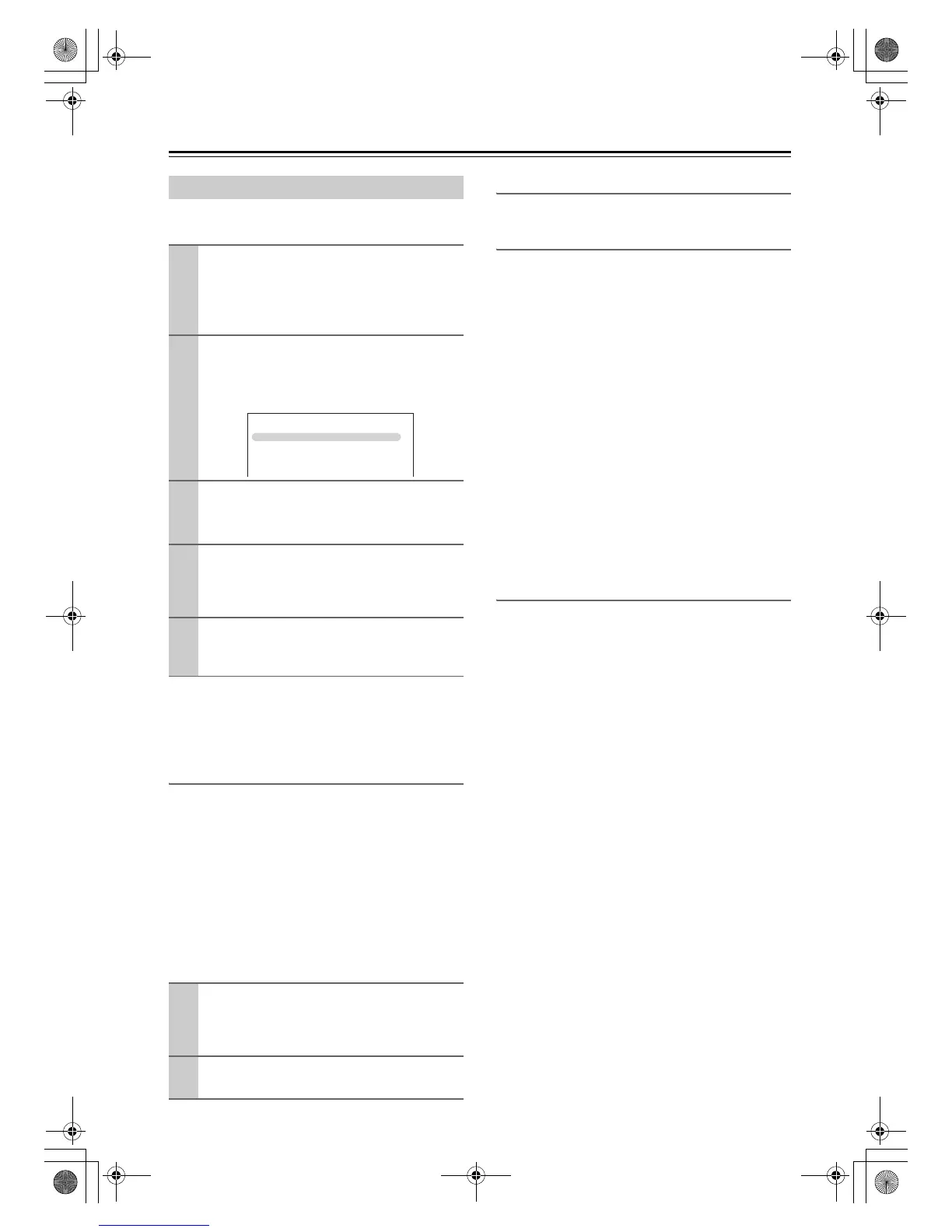92
Advanced Setup—Continued
.
This section explains items on the “Hardware Setup”
menu.
Note:
This procedure can also be performed on the AV receiver
by using its [Setup] button, arrow buttons, and [Enter]
button.
Remote ID
■ Remote ID
When several Integra/Onkyo components are used in the
same room, their remote ID codes may overlap. To differ-
entiate the AV receiver from the other components, you
can change its remote ID from 1, the default, to 2 or 3.
Note:
If you do change the AV receiver’s remote ID, be sure to
change the remote controller to the same ID (see below),
otherwise, you won’t be able to control it with the remote
controller.
Changing the Remote Controller’s ID
Zone 2
See “Zone 2” on page 96.
Tuner
■ FM/AM Frequency Step (on North American
models)
See “FM/AM Frequency Step Setup
(on North American models)” on page 45.
■
SAT Radio Mode (on North American models)
If you connect a SIRIUS Satellite Radio antenna to the
AV receiver (sold separately), set this setting to “SIR-
IUS” (see page 58).
■ Antenna Aiming (on North American models)
The ID of the Sirius Connect Home Tuner is displayed
here. You must sign up to obtain a SIRIUS ID (see
page 65).
■ SIRIUS Parental Lock
(on North American models)
This item is for use with SIRIUS Satellite Radio (see
page 62). It’s not available if “SAT Radio Mode” is set to
“None”.
HDMI
■ Audio TV Out
This preference determines whether audio received at
the HDMI IN is output by the HDMI OUT. You may
want to turn this preference on if your TV is connected
to the HDMI OUT and you want to listen to the audio
from a component that’s connected to an HDMI IN,
through your TV’s speakers. Normally, this should be set
to “Off”.
Notes:
• If
“On” is selected and the signal can be output by the
TV, the AV receiver will output no sound through its
speakers.
• If “On” is selected, “TV Sp On” appears on the Dis-
play by pressing the [Display] button.
•When
“TV Control” is set to “On”, this setting is fixed
to
“Auto”.
• With some TVs and input signals, no sound may be
output even when this setting is set to
“On”.
• When the “Audio TV Out” setting is set to
“On”, or
“TV Control” is set to “On” and you’re listening
through your TV’s speakers (see page 24), if you turn
up the AV receiver’s volume control, the sound will be
output by the AV receiver’s front left and right speak-
ers. To stop the AV receiver’s speakers producing
sound, change the settings, change your TV’s settings,
or turn down the AV receiver’s volume.
Hardware Setup
1
Press the [Receiver] button followed by
the [Setup] button.
The main menu appears onscreen.
If the main menu doesn’t appear, make sure the
appropriate external input is selected on your TV.
2
Use the Up and Down [q]/[w] buttons to
select “7. Hardware Setup”, and then
press [Enter].
The “Hardware Setup” menu appears.
3
Use the Up and Down [q]/[w] buttons to
select an item, and then press [Enter].
The screen for that item appears.
4
Use the Up and Down [q]/[w] buttons to
select an item, and use the Left and Right
[e]/[r] buttons to change it.
The items are explained below.
5
When you’ve finished, press the
[Setup] button.
The setup menu closes.
1
While holding down the [Receiver] button,
press and hold down the [Setup] button
until the Remote indicator lights up (about
3 seconds).
2
Use the number buttons to enter ID 1, 2, or 3.
The Remote indicator flashes twice.
7. Hardware Setup
1. Remote ID
2. Zone 2
3. Tuner
4. HDMI
5. Network
Off: HDMI audio is not output (default).
On: HDMI audio is output.
DTR-30.1_En_A.book 92 ページ 2009年4月9日 木曜日 午後1時30分
